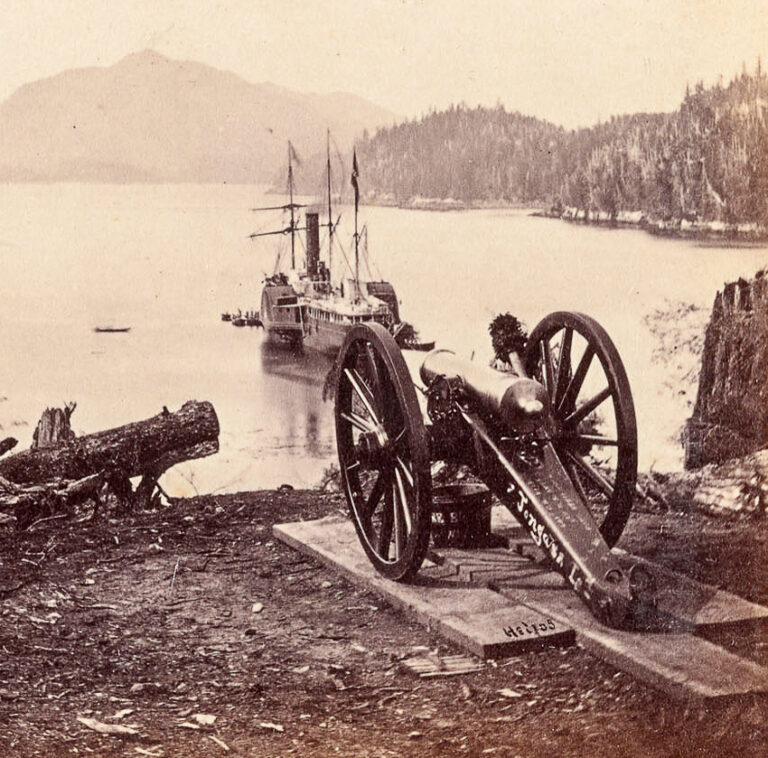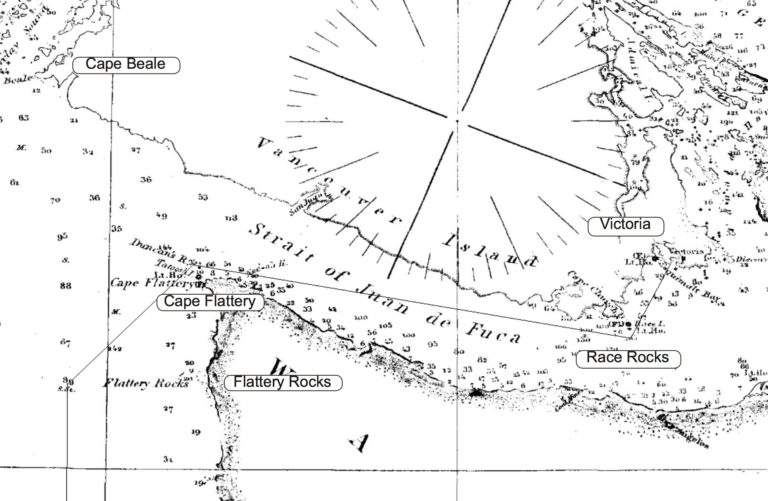
The SS ‘Pacific’ Sank, But What Happened to the S/V ‘Orpheus’?
Last week we shared the story of the discovery of SS Pacific, a steamship that sank off the coast of Cape Flattery, WA, in 1875. The ship sank around 20 minutes after colliding with the S/V Orpheus, which had mistaken the Pacific‘s single masthead light for the Cape Flattery Light, and ultimately crossed the Pacific‘s bow and put herself in the path of the inevitable collision. One of our readers, Jeff, asked, “What happened to the Orpheus?”

S/V Orpheus was a 200-foot, wooden-hulled sailing ship built in 1856, in Chelsea, Massachusetts. At the time of the accident, Orpheus was in use as a trading ship running along the Pacific Coast. On this occasion, under the command of Capt. Charles A. Sawyer, and carrying a crew of 21, she was sailing from San Francisco to Nanaimo, B.C. It was her second trip along the coast of Washington to Vancouver Island.

According to the account written by Daryl C. McClary on HistoryLink.org, the ship also carried the captain’s wife. The story goes: “Just before the collision, Captain Sawyer’s wife, Lillian, came on deck and together they watched the accident unfold. He hailed the steamer to stand by, but there was no reply. Sawyer’s wife was outraged by the incident and attempted to board the offending vessel before they drifted apart, but Sawyer restrained her.”
As the ships went their separate ways, Capt. Sawyer turned his attention to saving the Orpheus. As it turned out, the ship had not suffered severe damage and was able to set a few sails to help her navigate through the heavy weather while the crew carried out repairs. The next night the Orpheus continued her journey toward the Strait of Juan de Fuca, but she had moved too far north, and the lighthouse now seen by the captain was not Cape Flattery, but the newly built light at Cape Beale. Early the next morning the Orpheus ran aground on Tzartus Island, in Barkley Sound, Vancouver Island. While there were no casualties, the ship itself was lost.
Orpheus‘s crew were all rescued, but in the days and weeks that followed investigations into the accident led to accusations against Capt. Sawyer. After being arrested in Canada, but failing to appear in court, the captain was accused of manslaughter for “leaving the scene without trying to determine what damage had been done to the Pacific.” However, the verdict was never upheld or acted upon. Later, in San Francisco, Sawyer was accused in the federal court of “barratry by ‘willfully casting away his vessel’ on Vancouver Island to destroy evidence.” This case was dismissed due to a lack of proof.
Throughout the investigations there appeared much evidence to indicate that the SS Pacific was in poor condition. “Witnesses were called from Port Townsend who testified the Pacific‘s hull was rotten and she leaked badly.” Furthermore, a segment of the Pacific‘s bow that was found in Orpheus‘s rigging supports the belief that she was in poor condition. Would the Pacific (and her 300+ souls who perished) have survived the collision if she had been in better condition? It’s hard to know. But perhaps when the team from Rockfish Inc. salvage her remains from the ocean floor there will be enough evidence to put together a broader picture of that moment in maritime history.
It is interesting to note that despite having full and exclusive rights to the salvage, Rockfish Inc. may yet have to share the spoils of their discovery. According to the ruling, members of the public who can prove a connection are able to “file a claim to repossess” what is salvaged.
The Weather Network reported Rockfish Inc. co-founder Jeff Hummel’s saying that “four people have contacted him claiming to be descendants of passengers on board, including one person who lives on Vancouver Island, and he hopes more come forward.”
“Different people can come forward and say, ‘I have a claim to this part of the ship,’ or ‘this part of the cargo. Here’s why; here’s my evidence,'” Hummel said. “That’s the exciting part of the story.”

Gold bullion brings out a lot of folks!